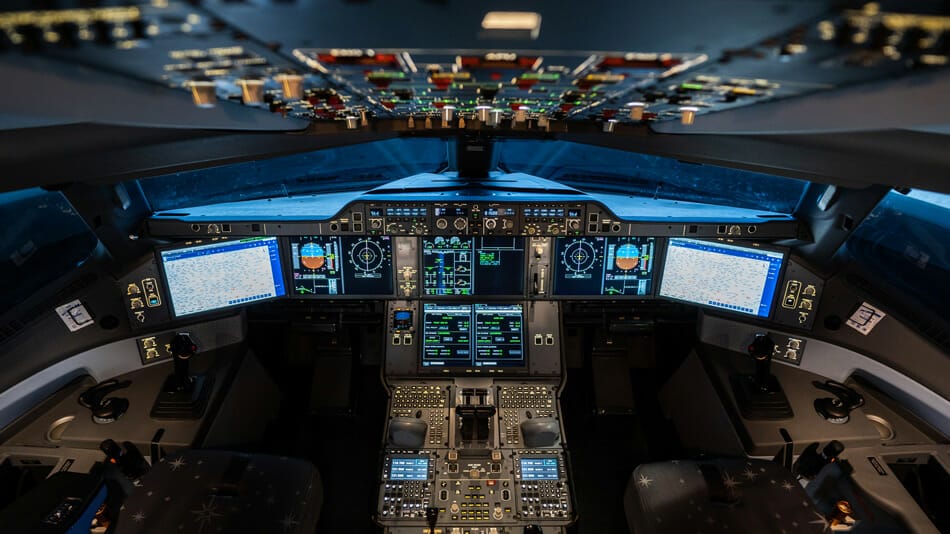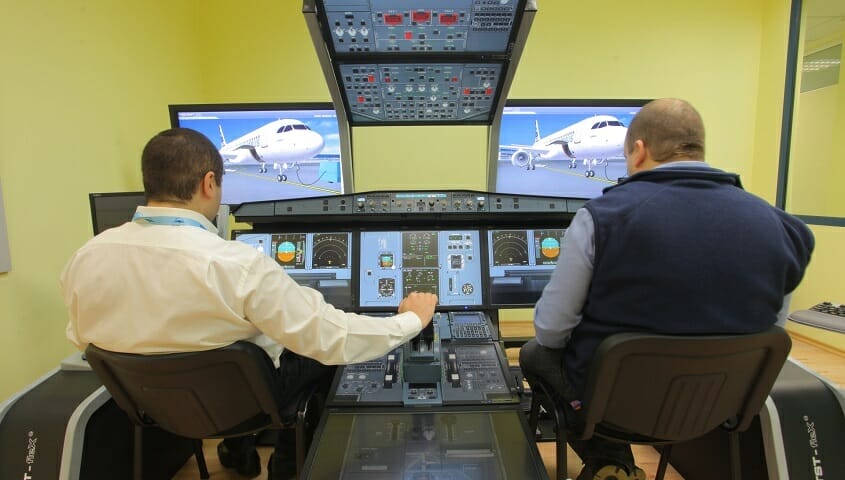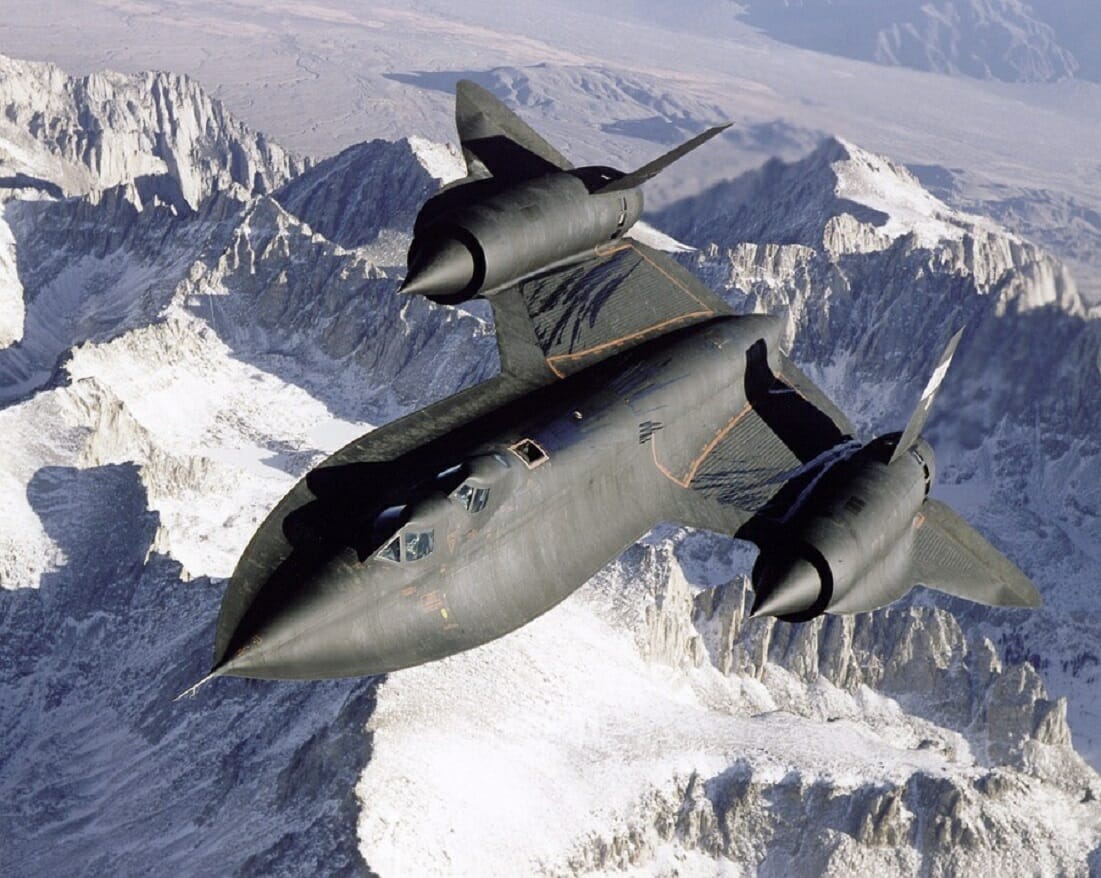The various benefits of using flight simulators for training aeronautical pilots.
Earning experience is a key component to building a successful career as a pilot. Flight hours, or the total amount of time that a person has spent piloting an aircraft, are typically used as a primary measure of a pilot’s level of experience. Before someone can be entrusted with commanding an aircraft as a captain or assisting in the flight as a first officer, they must first prove that they have enough experience to assume the responsibilities that they want to be entrusted with.
If you’re a new student who is still familiarizing yourself with the intricacies of commanding an aircraft, there’s a chance that you’ll use a flight simulator to get a good feel of what it’s like to fly a plane. Through simulator training, student pilots can mimic the flight experience and practice their instrumentation skills without leaving the safety of the ground. Here are some of the beneficial opportunities that learning from flight simulators can provide to students in flight schools:
It Offers a Safe Space for Making Mistakes
In general, schools are designed to provide students with a safe space where they can make mistakes while they’re still learning new information and mastering new skills. This principle remains in effect in flight schools, where student pilots are provided with a controlled space where they can learn about and practice the skills and techniques that they should use to ensure the safety and comfort of their passengers.
Compared to real-life planes, flight simulators are less risky. Even if you make a mistake while training or carrying out a maneuver that you just picked up in a simulator, this does not increase your risk of getting injured or putting the lives of the people around you in danger. If you’re using a simulator to practice, you can make mistakes, see exactly what went wrong, and find out what you need to correct safely.

It Enables Students to Try Until They Get Things Right
Making a mistake while using a flight simulator is not the end of the line for a student pilot. Again, the simulation offers a controlled environment where student pilots can feel what it’s like to command a plane. If they don’t get the technique or skill they’re practicing the first time, there’s always the option to keep trying to complete the lesson until they get it right. A flight school with a simulator is not just a safe space for making mistakes, but it’s also a perfect venue for picking up skills that require plenty of practice before they can be mastered.
It Presents Students with the Freedom to Train in Their Own Time
While planes are a piece of basic equipment for flight schools, they’re also quite an investment. Many students often have to wait their turn before they can use a plane to practice the skills they picked up from their instructors and in their classes. In addition to the long wait, many conditions should be accounted for before flying a plane. Extreme weather conditions like heavy rains or strong typhoons, for example, can make it challenging to follow the training schedule and ensure the safety of the people involved in the flight.
This is not the case for flight schools that use flight simulators. No matter what the weather is outside, the flight simulator can still present the ideal conditions to help student pilots develop the specific skills they are training for. This allows students to hone their skills and develop the necessary proficiencies.
It’s a Good Way to Become Familiar with Real-Life Conditions
Flying techniques must be adapted to the present weather conditions. The good news is that flight simulators can be programmed to mimic real-life conditions, enabling student pilots to practice what they have learned. If the students focus on flying their planes in stormy weather, they can do that using the flight simulator even if the weather outside is perfectly dry and sunny. If the students want to become more familiar with the feeling of flying over uneven terrain, they can do that by inputting the right conditions in the simulator. If they encounter these conditions in a real plane, it won’t feel like it’s their first time facing such a challenge. This, in turn, will help them stay calm and make smart decisions that will maintain the comfort and safety of their crew and passengers.
Flight simulators are great tools for learning skills and techniques that future pilots can use to ensure their exemplary safety records and piloting skills. If your flight school has a simulator, make the most of it and use the instrument to further improve the competencies you need to become a successful pilot.












